[mk_page_section bg_image=”/wp-content/uploads/2018/03/bg2.jpg” bg_position=”center top” bg_repeat=”no-repeat” bg_stretch=”true” sidebar=”sidebar-1″][vc_column][mk_padding_divider visibility=”visible-dt-v2″][mk_padding_divider size=”140″][mk_fancy_title tag_name=”h1″ color=”#ffffff” size=”40″ force_font_size=”true” size_smallscreen=”40″ size_tablet=”36″ size_phone=”32″ line_height=”110″ letter_spacing=”-1″ margin_bottom=”0″ font_family=”none”]Aiddocs helps in modernization of legacy ERP[/mk_fancy_title][mk_fancy_title color=”#ffb806″ size=”16″ force_font_size=”true” size_smallscreen=”16″ size_tablet=”16″ size_phone=”16″ line_height=”110″ txt_transform=”uppercase” letter_spacing=”2″ margin_bottom=”0″ font_family=”none”]// Aiddocs cases[/mk_fancy_title][mk_padding_divider size=”80″][mk_padding_divider visibility=”visible-dt-v2″][/vc_column][/mk_page_section][mk_page_section bg_color=”#ffffff” padding_bottom=”60″ sidebar=”sidebar-1″][vc_column css=”.vc_custom_1523272521610{margin-top: -80px !important;background-color: #f8f8f8 !important;}”][mk_padding_divider size=”60″][vc_row_inner][vc_column_inner css=”.vc_custom_1523272580030{padding-right: 5% !important;padding-left: 5% !important;}”][vc_column_text align=”center” css=”.vc_custom_1523272457250{margin-bottom: 0px !important;}”]Legacy client-server ERP faced compatibility problems during Office 365 tests due to using the proprietary binary doc document format, and the DDE-dependent client-side implementation of merging data to documents. Aiddocs provided an economic way to replace deprecated technologies and open up new possibilities in document processes. [/vc_column_text][/vc_column_inner][/vc_row_inner][mk_padding_divider][/vc_column][/mk_page_section][mk_page_section][vc_column][vc_row_inner][vc_column_inner width=”1/3″][mk_custom_list title=”Benefits” style=”mk-icon-angle-right”]
- Future proof technology for document production
- Consistent document output across all client apps, resulting cost savings
- Customer has control over document templates. Application updates typically not needed any more on layout or even content changes.
- One centralized template library to manage the template content. The new level of control this provides can’t be overstated.
- Metadata easy to add for documents – helps in archiving.
- Microsoft Office rich clients not required any more > new opportunities for planned Office 365 transition.
- No need for additional libraries to create pdf files out of doc files, as Aiddocs offers both .docx and .pdf output formats as standard.
- No need for additional libraries to insert QR codes, as Aiddocs offers that as standard.
- Legacy binary .dot templates replaced by modern OpenXML templates.
[/mk_custom_list][/vc_column_inner][vc_column_inner width=”2/3″][mk_image src=”/wp-content/uploads/2018/04/erp-case-infograafi.png” image_size=”full”][mk_padding_divider size=”20″][vc_column_text title=”Project in detail” css=”.vc_custom_1523340616189{margin-bottom: 0px !important;}”]
Modernization of legacy IT system does not need to be a choice between go and no-go. Selectively replacing outdated functionality is often enough to transform the system to meet the requirements of today, paving the way for the more fundamental changes at later date.
In the case of our customer, a mid-sized organization providing testing and certification services, the custom in-house ERP system still serves the needs of the organization on the whole, despite of being designed as a technologically outdated client-server solution.
Problems with integrations
As is often the case, it’s integrations that pose challenges to legacy systems. This ERP needed to be integrated with Canon Therefore document management system, stressing the need for metadata in documents produced by the ERP. At the same time, moving to Office 365 with up-to-date Open XML file formats proved to cause technical problems, due to the old DDE technology used in the ERP to merge dynamic content to documents generated.
Solution
To overcome these problems, the original in-app implementation of document generation was replaced by Aiddocs service requests. The process turned out straightforward and highly cost-efficient.
The used Powerbuilder development platform didn’t provide a support for XML handling nor SOAP or REST for Aiddocs service requests, but this turned out not to be a significant problem. With just a few custom routines and the adoption of a tiny Aiddocs legacy connector component the document production functionality was rebuilt to use a solid, long term solution.
Potential for the future
As before, all document titles can be created by the ERP, but now also by the few process specific applications and by any other application in the organization, always resulting consistent output. This will be especially useful when the time comes to replace the legacy applications altogether.[/vc_column_text][/vc_column_inner][/vc_row_inner][mk_padding_divider size=”60″][/vc_column][/mk_page_section][mk_page_section bg_color=”#f8f8f8″ sidebar=”sidebar-1″][vc_column][mk_padding_divider size=”60″][mk_fancy_title size=”44″ force_font_size=”true” size_smallscreen=”40″ size_tablet=”36″ size_phone=”32″ margin_bottom=”0″ font_family=”none” align=”center” el_class=”zerobm”]More Cases[/mk_fancy_title][mk_divider style=”thin_solid” divider_width=”custom_width” custom_width=”35″ thin_single_color=”#c4c4c4″ thickness=”3″ margin_top=”0″ margin_bottom=”10″][vc_row_inner][vc_column_inner width=”1/6″][/vc_column_inner][vc_column_inner width=”2/3″][vc_column_text align=”center” css=”.vc_custom_1523438368570{margin-bottom: 0px !important;}”]Learn more on how customers use Aiddocs.[/vc_column_text][/vc_column_inner][vc_column_inner width=”1/6″][/vc_column_inner][/vc_row_inner][mk_padding_divider size=”20″][mk_portfolio image_size=”full” excerpt_length=”300″ zoom_icon=”false” count=”3″ sortable=”false” pagination=”false” disable_lazyload=”true” posts=”937, 1081, 1085″][mk_padding_divider size=”60″][/vc_column][/mk_page_section]
